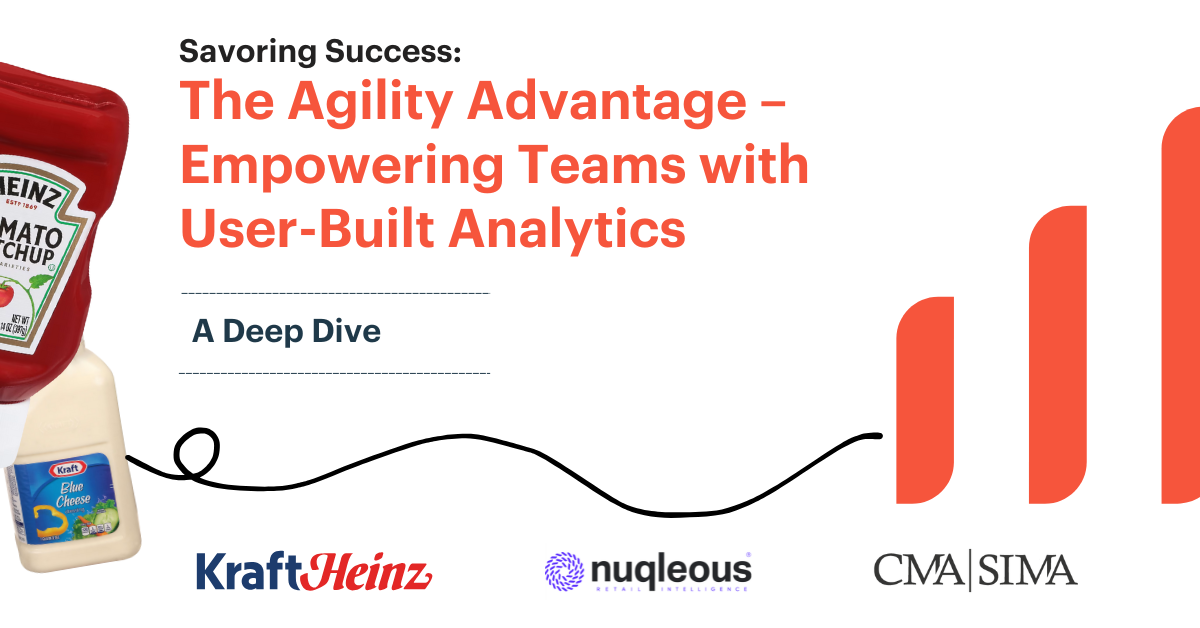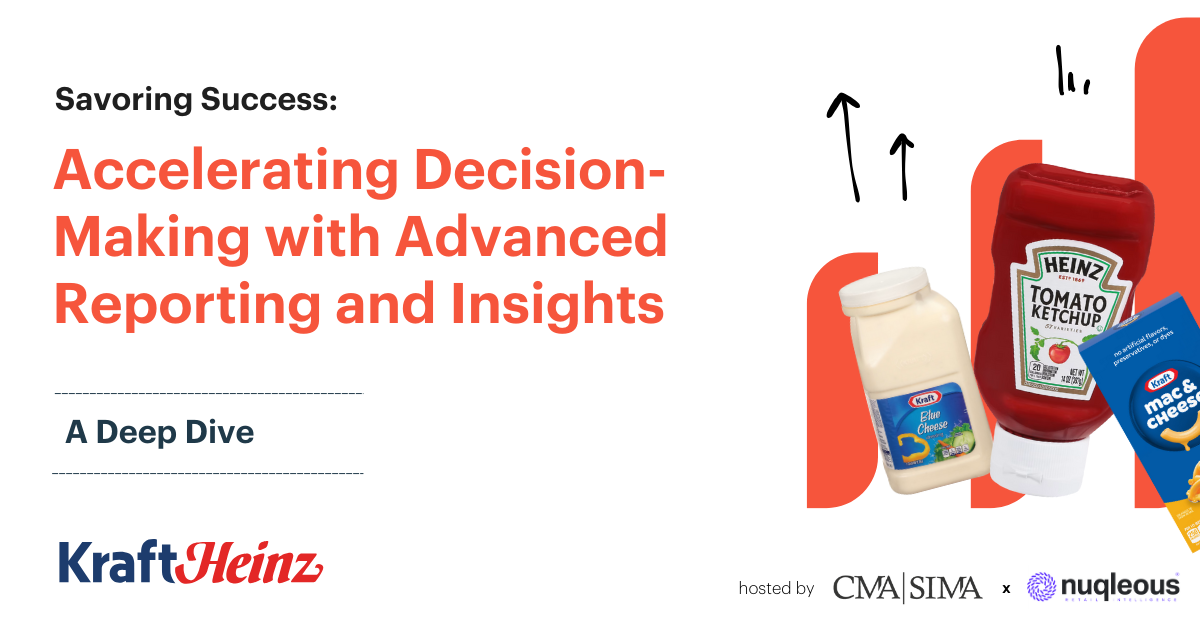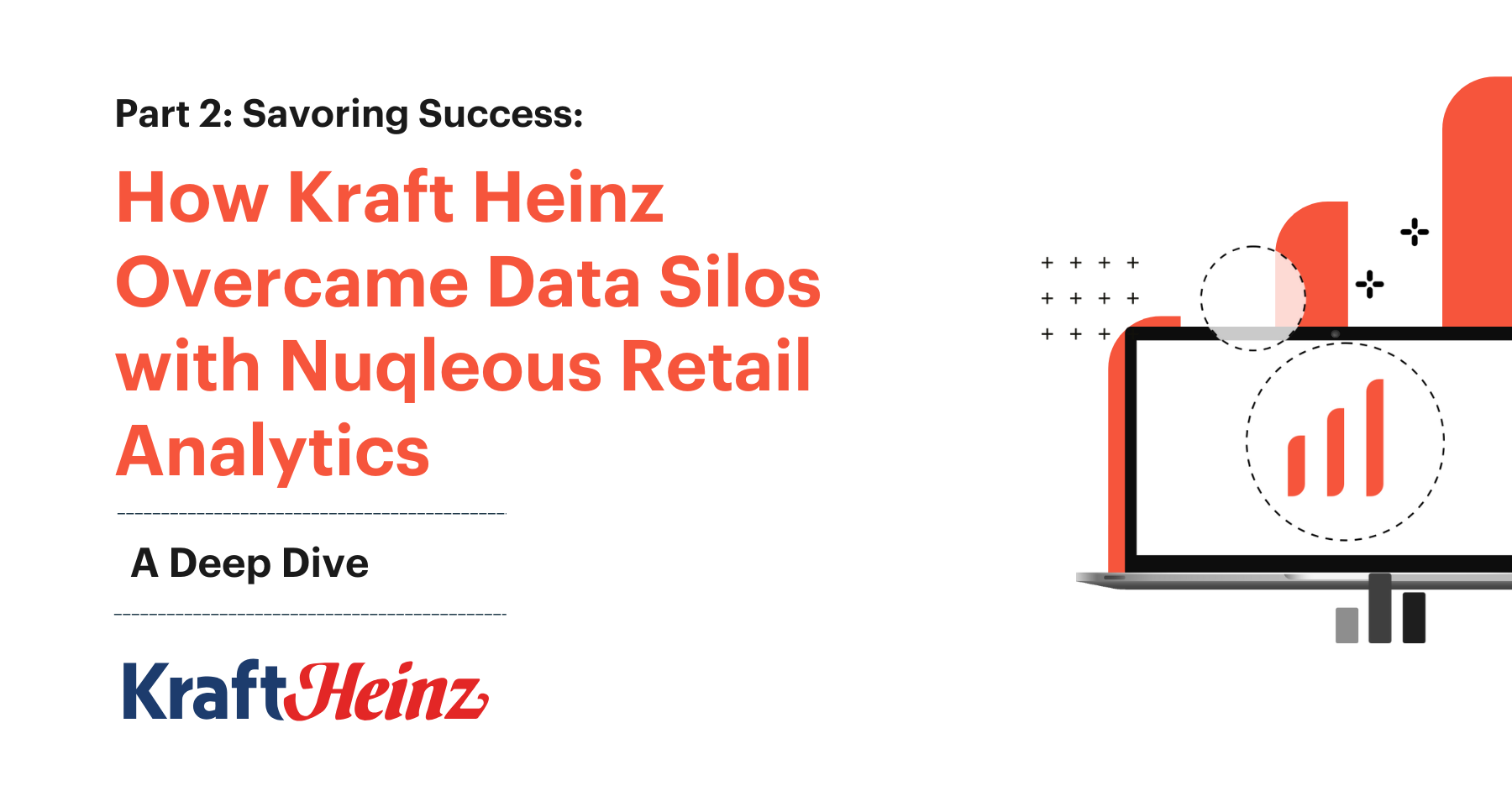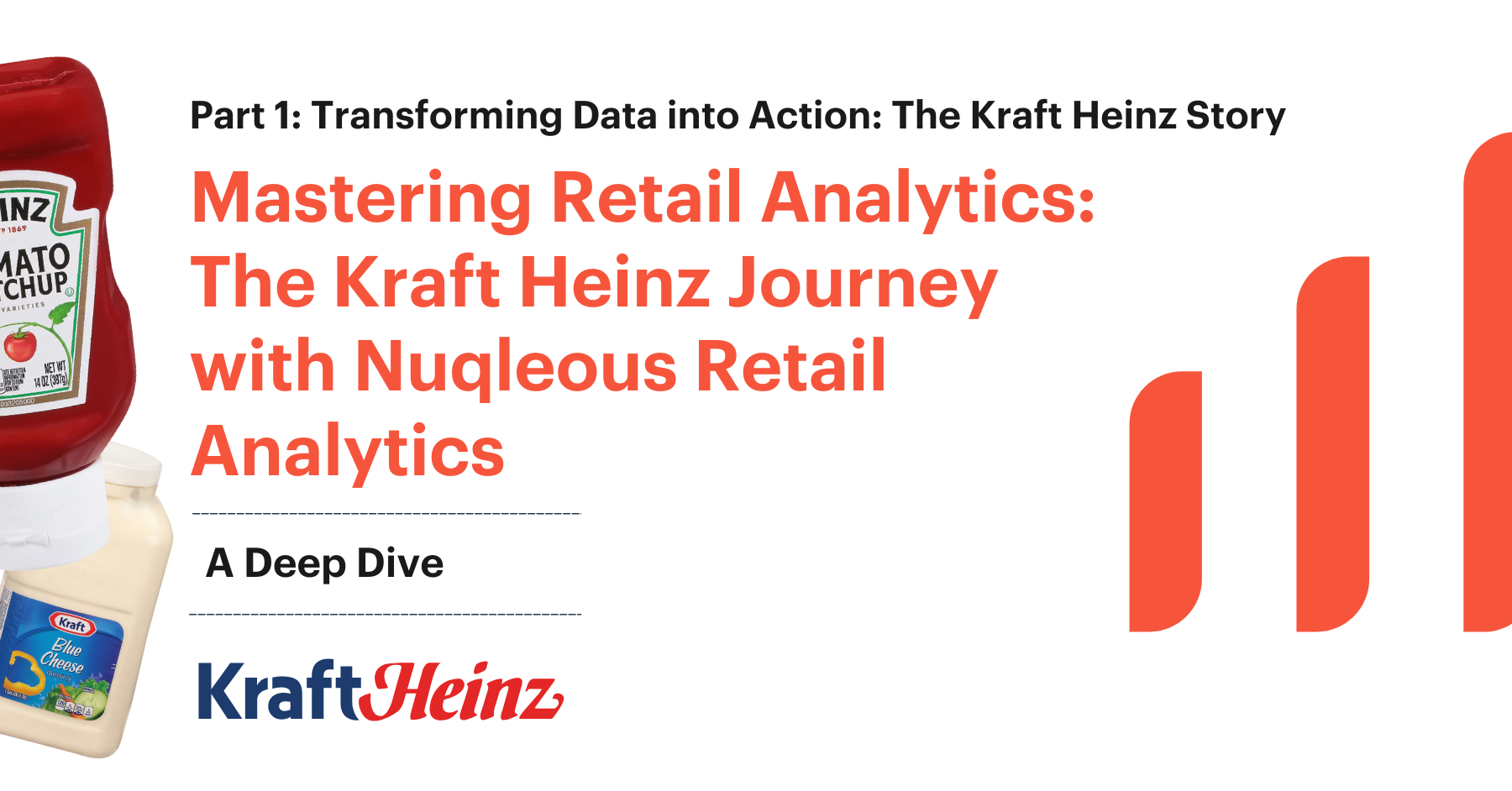In today’s fast-paced retail landscape, the ability to adapt quickly to market shifts and consumer demands is not just an advantage—it’s a necessity. For a global powerhouse like Kraft Heinz, agility is crucial to staying ahead of the competition and ensuring long-term growth. To achieve this, Kraft Heinz needed more than just advanced analytics; they needed a solution that could empower their teams to take control of their data and create customized insights on their terms.
This blog explores how Kraft Heinz leveraged Nuqleous Retail Analytics solution to empower their teams with user-built analytics, enabling them to respond to business challenges in real-time and make data-driven decisions faster than ever before.
The Challenge: Lack of Agility and User Independence
Prior to implementing Nuqleous Retail Analytics solution, Kraft Heinz faced significant roadblocks in building customized analytics to address emerging business questions. Traditional analytics models required heavy reliance on IT or external data teams, creating bottlenecks that slowed down decision-making. As Erin Martin, Director of Category Leadership at Kraft Heinz, explained:
"We needed to go deep and leverage the most out of the richest consumer data we’ve ever had... But without a platform that could provide real-time access and user flexibility, we were stuck spending too much time on the basics."
The issue wasn’t just about speed—it was about empowerment. Kraft Heinz needed a way to put advanced analytics tools directly into the hands of the teams that understood the business best, giving them the autonomy to build their own reports and visualizations without waiting for technical support. The goal was to reduce time-to-insight, improve responsiveness, and create a culture of data-driven problem solving.
The Solution: User-Built Analytics with Nuqleous
Nuqleous Retail Analytics provided Kraft Heinz with a new level of agility by offering user-built analytics capabilities. Designed for both technical and non-technical users, this feature empowered Kraft Heinz’s category managers, sales teams, and analysts to create custom reports and dashboards tailored to their specific needs.
Key Features of the User-Built Analytics Solution:
- Drag-and-Drop Functionality: Even users without technical expertise could build complex visualizations with an intuitive drag-and-drop interface, allowing them to focus on insights rather than data formatting.
- Natural Language Processing (NLP): The platform’s NLP capabilities enabled users to generate complex queries using everyday language, reducing the learning curve and making data accessible to a broader audience.
- Customizable Dashboards: Kraft Heinz teams could design and share dashboards on the fly, adapting them in real-time as new business questions arose.
- Scenario Analysis: With powerful scenario modeling tools, team members could test hypotheses, predict outcomes, and create actionable plans quickly—without waiting on IT for support.
The Impact: Faster Decisions, Greater Adaptability
The ability to build custom analytics transformed how Kraft Heinz approached problem-solving. Instead of waiting days or even weeks for IT teams to deliver specialized reports, business users could now develop their own analyses in a matter of minutes. This newfound agility had a direct impact on several key areas:
- Faster Response to Market Changes: When Kraft Heinz noticed an unexpected spike in online demand for certain products, category managers were able to quickly build reports analyzing sales trends, identify regions with supply shortages, and collaborate with the supply chain team to address the issue. As a result, Kraft Heinz reduced potential out-of-stocks and minimized lost sales.
- Improved Collaboration Across Teams: With user-built analytics, category managers and sales teams could create shared dashboards that aligned everyone on the same set of metrics and KPIs. This level of collaboration ensured that all stakeholders—from marketing to supply chain—had a unified understanding of performance and could act in concert.
- Proactive Problem Solving: Instead of being reactive to business challenges, Kraft Heinz could now take a proactive approach. For example, by building custom dashboards to monitor Nil Pick data (cases where items couldn’t be fulfilled due to inventory issues), teams could identify and resolve stock issues before they impacted sales, leading to more effective inventory management.
“We’ve not had the solution but six months... and the ability to build these things in that quick of a turnaround—speed and flexibility were key to us,” noted Henry Casamayor, Associate Director of Strategy, Insights & Analytics at Kraft Heinz.
Real-World Examples: Driving Strategic Decisions with User-Built Analytics
One of the most compelling use cases for user-built analytics was in Kraft Heinz’s approach to managing complex assortments. The company manages thousands of SKUs across multiple retail channels, and the ability to customize analytics at the item level was essential for making informed decisions.
Using the user-built analytics tool, Kraft Heinz’s category managers developed a series of dashboards to analyze product performance by geography, store type, and consumer segment. They were able to identify underperforming SKUs, optimize product assortments by region, and even recommend targeted promotions to drive growth in specific markets.
In one scenario, a team noticed that a popular condiment brand was performing exceptionally well in the Midwest but lagging in other regions. With the flexibility of the user-built analytics platform, they quickly created a comparative analysis to identify the key drivers of success in the Midwest and replicate those strategies in other regions. This agility not only saved time but directly contributed to increased sales across the country.
Why User-Built Analytics Matter in the CPG Industry
For companies operating at the scale of Kraft Heinz, the ability to adapt quickly and independently is critical. The traditional model of relying solely on IT for analytics and reporting no longer supports the fast pace of modern business. By putting advanced analytics directly in the hands of business users, Kraft Heinz has unlocked new levels of agility and responsiveness.
This capability is especially important in the CPG industry, where consumer preferences can shift rapidly, and retailers are constantly evolving their strategies. With user-built analytics, Kraft Heinz is better equipped to anticipate market changes, respond in real-time, and drive data-driven growth.
Looking Ahead: What’s Next for Kraft Heinz?
The adoption of user-built analytics is just one part of Kraft Heinz’s broader strategy to transform its data capabilities. Moving forward, the company plans to expand its use of these tools to more teams and continue to refine its approach to data-driven decision-making.



